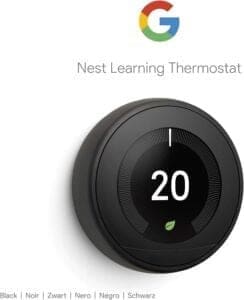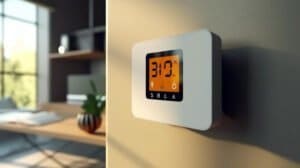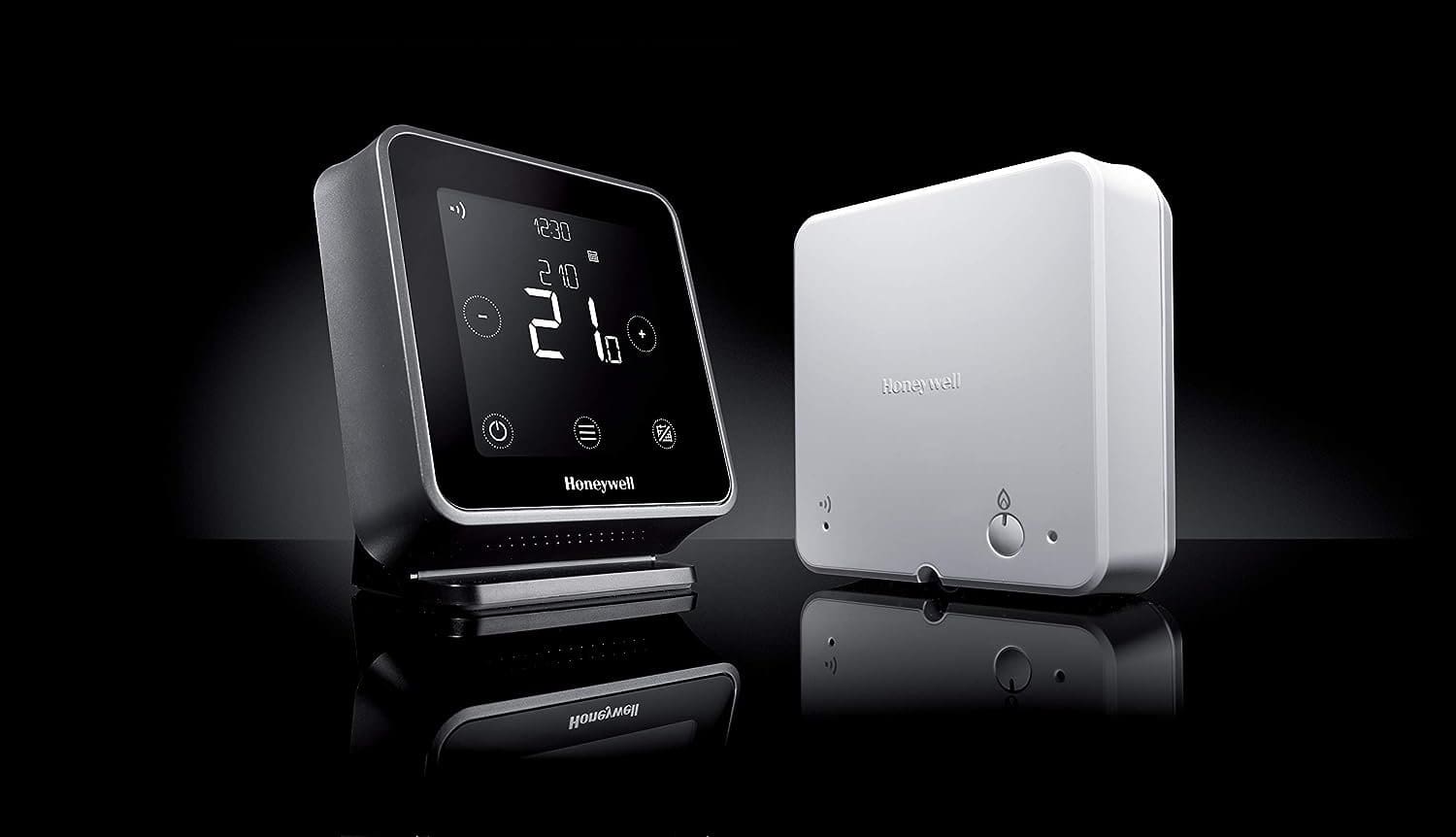If you’ve ever found yourself wondering if you can automate your home’s heating and cooling systems, look no further. As technology continues to advance, so does the possibility of automating various aspects of our everyday lives. From smart thermostats that learn your preferences to interconnected systems that can be controlled with a simple voice command, the options for automating your home’s heating and cooling are expanding rapidly. In this article, we will explore the benefits and considerations of automating these systems and provide you with some practical tips on how to get started. So, get ready to bring a new level of convenience and efficiency to your home’s temperature control!
Benefits of Home Automation
Home automation offers several benefits that can enhance your lifestyle and improve your comfort. By automating your home’s heating and cooling systems, you can experience the following advantages:
- Convenience: One of the main benefits of home automation is convenience. With automated heating and cooling systems, you can easily control the temperature of your home with just a few taps on your smartphone or using voice commands. You no longer have to manually adjust the thermostat or remember to change the settings before leaving the house.
- Energy Efficiency: Another significant advantage of home automation is its ability to save energy and reduce costs. Automated systems allow you to schedule and adjust the temperature settings based on your needs and preferences. This results in optimal energy usage, reducing waste and lowering your utility bills.
- Comfort and Customization: Home automation allows you to create personalized temperature zones, ensuring that each area of your home is set to your desired comfort level. You can set different temperatures for bedrooms, living areas, and even individual rooms, providing tailored comfort for everyone in your household.
- Remote Access: With remote access capabilities, you can control your heating and cooling systems from anywhere in the world. Whether you are at work, on vacation, or simply lounging on the couch, you can easily monitor and adjust the temperature to ensure your home is comfortable upon your return.
- Integration with Other Smart Devices: Home automation systems can integrate with other smart devices, creating a seamless and interconnected ecosystem in your home. For example, you can set your heating and cooling systems to adjust automatically when the smart lock on your front door detects that you have left the house.
Overall, home automation provides convenience, energy efficiency, comfort, and the ability to create a smart and interconnected living space.
Types of Home Automation Systems
There are several types of home automation systems available in the market, each offering different features and capabilities. Some of the most common types of home automation systems for heating and cooling include:
1. Basic Thermostat Automation
Basic thermostat automation systems allow you to control the temperature settings in your home manually. They typically feature a simple interface with basic functions such as temperature adjustment and mode selection (cool, heat, or off). While these systems lack advanced features, they can still provide a level of convenience compared to traditional thermostats.
2. Programmable Thermostats
Programmable thermostats offer more advanced features than basic automation systems. With programmable thermostats, you can schedule temperature changes based on your daily routine. For example, you can set different temperature settings for weekdays and weekends, or adjust the temperature during specific times of the day. This allows for energy savings and customized comfort without requiring constant manual adjustments.
3. Smart Thermostats
Smart thermostats are the most advanced and feature-rich home automation systems for heating and cooling. These thermostats connect to your home’s Wi-Fi network and offer a range of functionalities. Smart thermostats often come with a smartphone app or a web interface that allows you to control the temperature remotely. They can also learn your preferences over time and make automatic adjustments to save energy. Some smart thermostats even include additional features like occupancy sensors, weather forecasts, and integration with voice assistants.
When choosing a home automation system for your heating and cooling needs, it is essential to consider your requirements, budget, and desired level of automation.

Choosing the Right Automation System
Selecting the right home automation system for your heating and cooling needs is crucial to ensure that you maximize its benefits and functionality. Consider the following factors when choosing an automation system:
1. Assess Your Needs
Before making a decision, assess your needs and priorities. Consider factors such as the size of your home, the number of zones you want to control, and any specific features you require. This evaluation will help you determine the type of automation system that best suits your requirements.
2. Research Different Systems
Take the time to research and compare different automation systems available on the market. Look for customer reviews, product specifications, and ratings to gain insight into the performance and reliability of each system. Consider factors such as ease of use, compatibility, and additional features offered by each system.
3. Consider Compatibility
Ensure that the automation system you choose is compatible with your existing heating and cooling equipment. Some systems may require additional components or specific wiring, so it is crucial to check compatibility beforehand. Compatibility issues can affect the performance and functionality of your automation system.
4. Check for Energy Efficiency
Look for automation systems that prioritize energy efficiency. Check if the system incorporates features such as energy usage monitoring, adaptive learning algorithms, or temperature scheduling to optimize energy consumption. Energy-efficient systems can help reduce your carbon footprint and save on energy costs.
5. Evaluate User-Friendliness
Consider the user interface and ease of use when choosing an automation system. Look for systems that offer intuitive controls, clear instructions, and easy-to-understand features. A user-friendly system will make it easier for you to navigate and utilize all the benefits of your automation system.
By considering these factors, you can select the right home automation system that meets your needs, fits your budget, and provides an enhanced living experience.
Installation and Setup
Once you have chosen your automation system, the next step is the installation and setup process. The installation method will depend on the type of automation system you have selected.
1. DIY Installation
Many home automation systems, especially basic and programmable thermostats, are designed for easy do-it-yourself (DIY) installation. These systems typically come with detailed installation instructions and can be set up without professional assistance. DIY installation can save you money on installation costs, and it allows you to have full control over the setup process.
However, if you are not comfortable with performing electrical or HVAC-related installations, it is recommended to seek professional help to ensure the installation is done correctly.
2. Professional Installation
Some automation systems, particularly smart thermostats and more advanced systems, may require professional installation. Professional installation ensures that the system is installed correctly, and all components are properly connected. HVAC professionals or certified technicians can handle the installation process efficiently and offer guidance on system setup and configuration.
Professional installation may come at an additional cost, but it guarantees that your automation system functions optimally from the start.
When deciding between DIY installation and professional installation, consider your comfort level with electrical work and the complexity of the system you have chosen.
Monitoring and Control
Part of the allure of home automation is the ability to monitor and control your heating and cooling systems effortlessly. Here are some common methods for monitoring and controlling your automated systems:
1. Remote Access
Most automation systems offer remote access capabilities, allowing you to control your heating and cooling systems from anywhere with an internet connection. This can be done through a dedicated smartphone app or a web interface on your computer. With remote access, you can adjust the temperature, set schedules, and monitor energy usage even when you are not at home.
2. Voice Control
Many automation systems now integrate with popular voice assistants like Amazon Alexa, Google Assistant, or Apple Siri. This enables you to control your heating and cooling systems using voice commands. For example, you can simply say, “Hey Google, set the temperature to 72 degrees,” and your automation system will adjust accordingly.
Voice control adds another layer of convenience and hands-free operation to your automated home.
3. Mobile Apps and Interfaces
Automation systems often come with mobile apps specifically designed to control and monitor the system. These apps provide an intuitive interface where you can adjust temperature settings, create schedules, and receive notifications about system status. The apps may also allow you to access additional features offered by the automation system, such as energy usage reports or integration with other smart devices.
4. Integration with Other Smart Devices
Home automation systems can seamlessly integrate with other smart devices in your home, creating a cohesive ecosystem. For instance, your automation system can communicate with your smart lighting system or your smart blinds to create an energy-efficient and comfortable living environment. Integration allows for synchronized control and automation across different devices, simplifying your daily routine.
With the variety of monitoring and control options available, you can choose the method that suits your preferences and lifestyle.
Saving Energy and Cost
Home automation systems provide several features that can help you save energy and reduce costs. Here are some ways automation can contribute to energy efficiency:
1. Temperature Scheduling
Automation systems allow you to create temperature schedules based on your daily routine. You can set different temperatures for various times of the day, ensuring that your home is comfortable when you need it and saving energy when you don’t. For example, you can program the system to lower the temperature during working hours and raise it when you return home.
2. Adjusting Temperature Zones
By creating and controlling temperature zones, you can optimize energy usage according to your needs. For instance, you can have different temperature settings for bedrooms, living areas, or unoccupied rooms. This avoids heating or cooling areas of the house that are not in use, which can lead to energy savings.
3. Weather-Based Adaptation
Some automation systems can integrate weather forecasts into their algorithms and adjust temperature settings accordingly. If the system detects a particularly hot or cold day, it can proactively adapt the temperature to maintain optimal comfort while minimizing energy consumption. Weather-based adaptation ensures efficient and responsive temperature control.
4. Energy Usage Tracking
Many automation systems offer energy usage tracking features that provide detailed insights into your energy consumption. You can monitor how much energy your heating and cooling systems are using, identify trends, and make adjustments to further optimize energy efficiency. Increased awareness of energy usage can help you make informed decisions and take steps to reduce wastage.
5. Energy-Saving Tips
Automation systems often provide energy-saving tips and suggestions to help you improve energy efficiency. These tips may include reminders to change air filters, alerts for potential energy-wasting activities, or recommendations on optimal temperature settings. By following these suggestions, you can maximize energy savings and reduce your environmental impact.
By utilizing these energy-saving features and adopting energy-conscious behaviors, you can significantly reduce your energy consumption and lower your utility bills over time.
Maintenance and Troubleshooting
To ensure the smooth operation of your home automation system, regular maintenance and troubleshooting are essential. Here are some maintenance and troubleshooting practices to keep in mind:
1. Regular Maintenance
Consistent maintenance is crucial for keeping your automation system and the associated heating and cooling equipment in optimal condition. Regularly check and clean sensors, filters, and other components as recommended by the manufacturer. Remove any dust or debris that may obstruct proper functioning. Follow the maintenance guidelines provided with your automation system to prevent performance issues.
2. Troubleshooting Common Issues
Even with proper maintenance, occasional issues may still arise. If you encounter any problems with your automation system or heating and cooling equipment, refer to the troubleshooting guide provided by the manufacturer. Common issues may include connectivity problems, inaccurate temperature readings, or unresponsive controls. Following the troubleshooting steps can often resolve these issues without requiring professional assistance.
If the problem persists or if you are unsure of how to proceed, contact customer support or consult a professional technician to diagnose and repair the issue.
By performing regular maintenance and addressing troubleshooting steps promptly, you can ensure that your automation system remains reliable and efficient.
Potential Challenges and Limitations
While home automation offers numerous benefits, it is essential to be aware of potential challenges and limitations. Here are some factors to consider:
1. Compatibility Issues
Compatibility can be a concern when integrating different automation devices and smart home systems. Ensure that the automation system you choose is compatible with your existing heating and cooling equipment. Additionally, if you plan to expand your automation system in the future, check if it can integrate with other devices or platforms seamlessly to avoid compatibility issues down the line.
2. Internet Connectivity Dependence
Most automation systems rely on internet connectivity to function properly. If your internet connection goes down, you may temporarily lose remote access or other online features. However, many automation systems have built-in fail-safes that allow local control and operation in the event of an internet outage. Check the system’s specifications to understand its offline capabilities.
3. Initial Costs
Investing in a home automation system can require an initial upfront cost. The price can vary depending on the complexity of the system, the number of zones you want to control, and the features included. Consider your budget and long-term cost savings when deciding on the level of automation you want to achieve.
4. Learning Curve
Using a home automation system may involve a learning curve, especially if you are not familiar with smart technology. Take the time to familiarize yourself with the system’s features and controls, and be prepared to troubleshoot minor issues that may arise. The learning curve is typically overcome quickly, and the benefits of automation outweigh any initial challenges.
5. Privacy and Security Concerns
As with any connected smart device, home automation systems can raise privacy and security concerns. Ensure that the automation system you choose has strong security measures in place, such as encryption and secure login credentials. Regularly update your system’s software and firmware to protect against potential vulnerabilities.
By being aware of these challenges and taking necessary precautions, you can mitigate potential risks and enjoy the benefits of home automation with peace of mind.
Popular Home Automation Brands
There are several reputable brands in the home automation market that offer reliable and feature-rich systems. Here are some popular brands to consider:
1. Nest
Nest, a subsidiary of Google’s parent company Alphabet Inc., is known for its innovative smart home products, including smart thermostats. Nest thermostats are simple to use, offer advanced learning capabilities, and integrate well with other smart devices.

2. Ecobee
Ecobee is a leading name in the smart thermostat industry. Ecobee thermostats feature room sensors that allow for precise temperature control in multiple zones. They also offer energy reports, voice control integration, and compatibility with popular smart home platforms.
3. Honeywell
Honeywell has been a trusted name in heating and cooling systems for decades. Their smart thermostats combine reliability with advanced features like voice control, geofencing, and integration with popular smart home ecosystems.

4. Emerson
Emerson offers a range of smart thermostats designed to suit different needs and budgets. Their thermostats provide intuitive control, remote access, and energy-saving features that contribute to increased comfort and efficiency.
5. Google Home
Google Home is not only a voice-controlled smart speaker but also a hub for home automation. When paired with compatible devices, such as smart thermostats, Google Home allows for voice control and seamless integration with other smart systems in your home.
These brands have established themselves as industry leaders by delivering reliable products, innovative features, and excellent customer support.
In Conclusion
Home automation systems provide a range of benefits for heating and cooling, including convenience, energy efficiency, customization, and enhanced control. By choosing the right automation system, performing proper installation and setup, and utilizing the monitoring and control features effectively, you can optimize the comfort and efficiency of your home.
Remember to consider factors such as your specific needs, compatibility, energy efficiency, and user-friendliness when selecting an automation system. Regular maintenance and troubleshooting are crucial to keep your system running smoothly, and it is important to be aware of potential challenges and limitations. Popular brands like Nest, Ecobee, Honeywell, Emerson, and Google Home offer reliable and feature-rich solutions for home automation.
With the right automation system in place, you can enjoy the enhanced comfort, convenience, and energy savings that come with automated heating and cooling systems.
